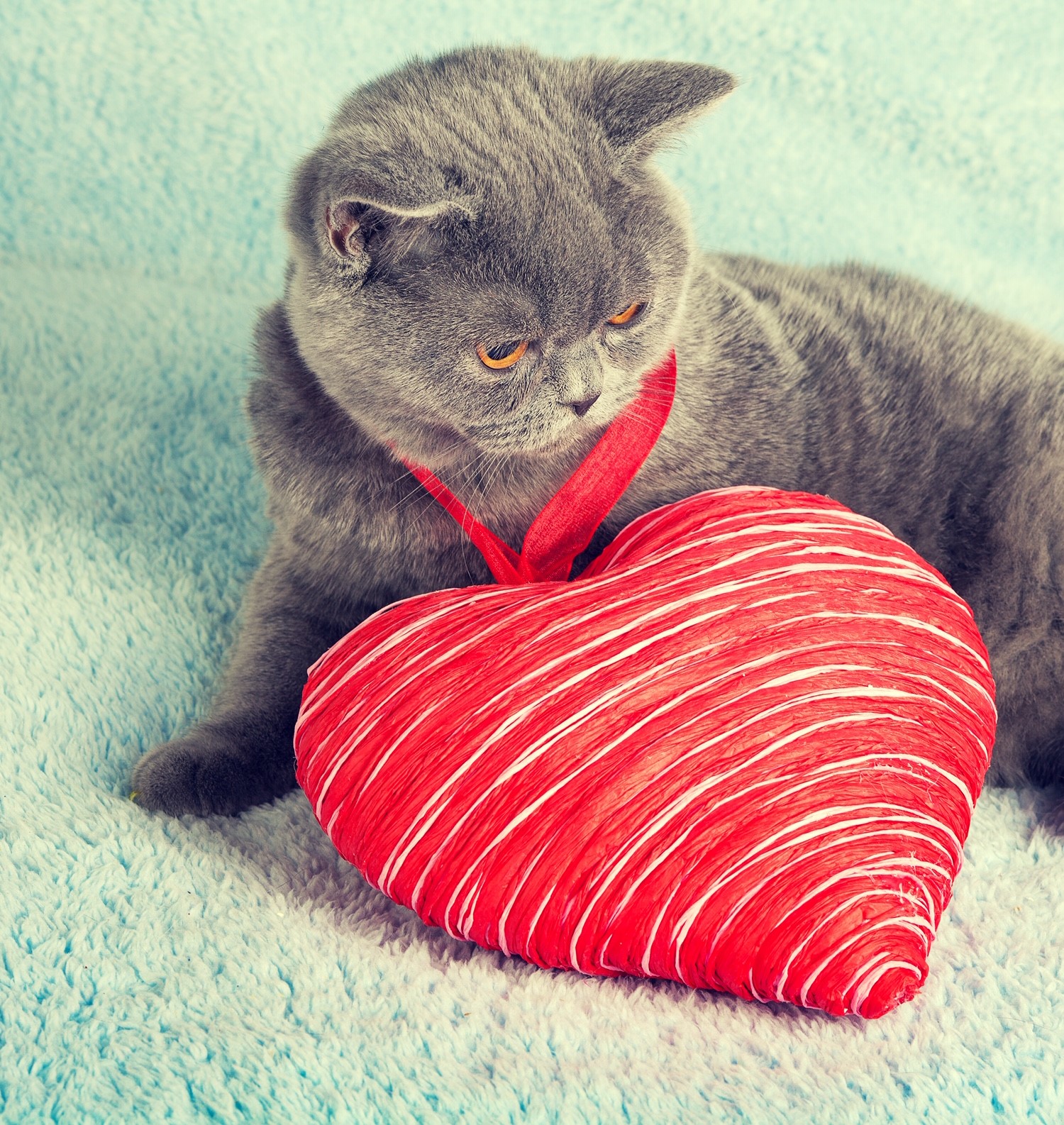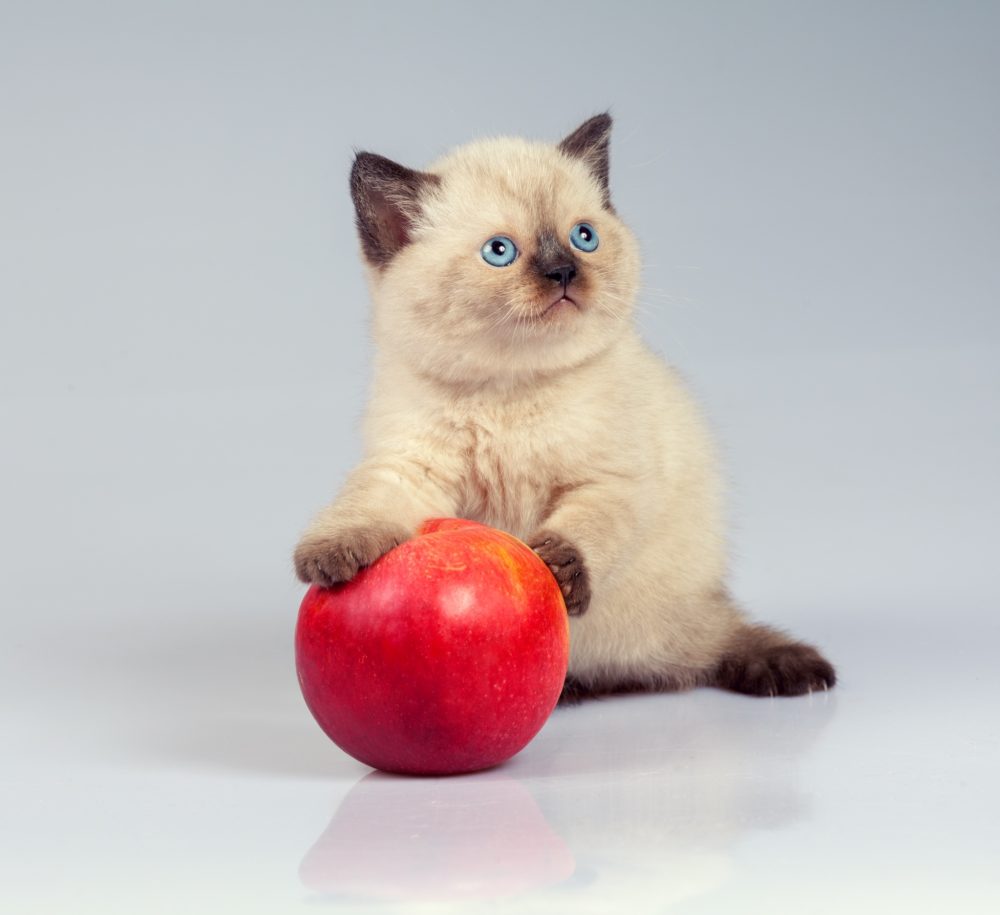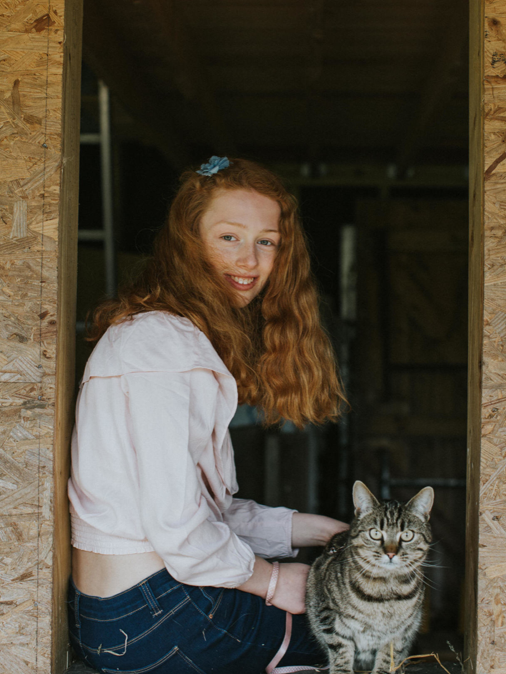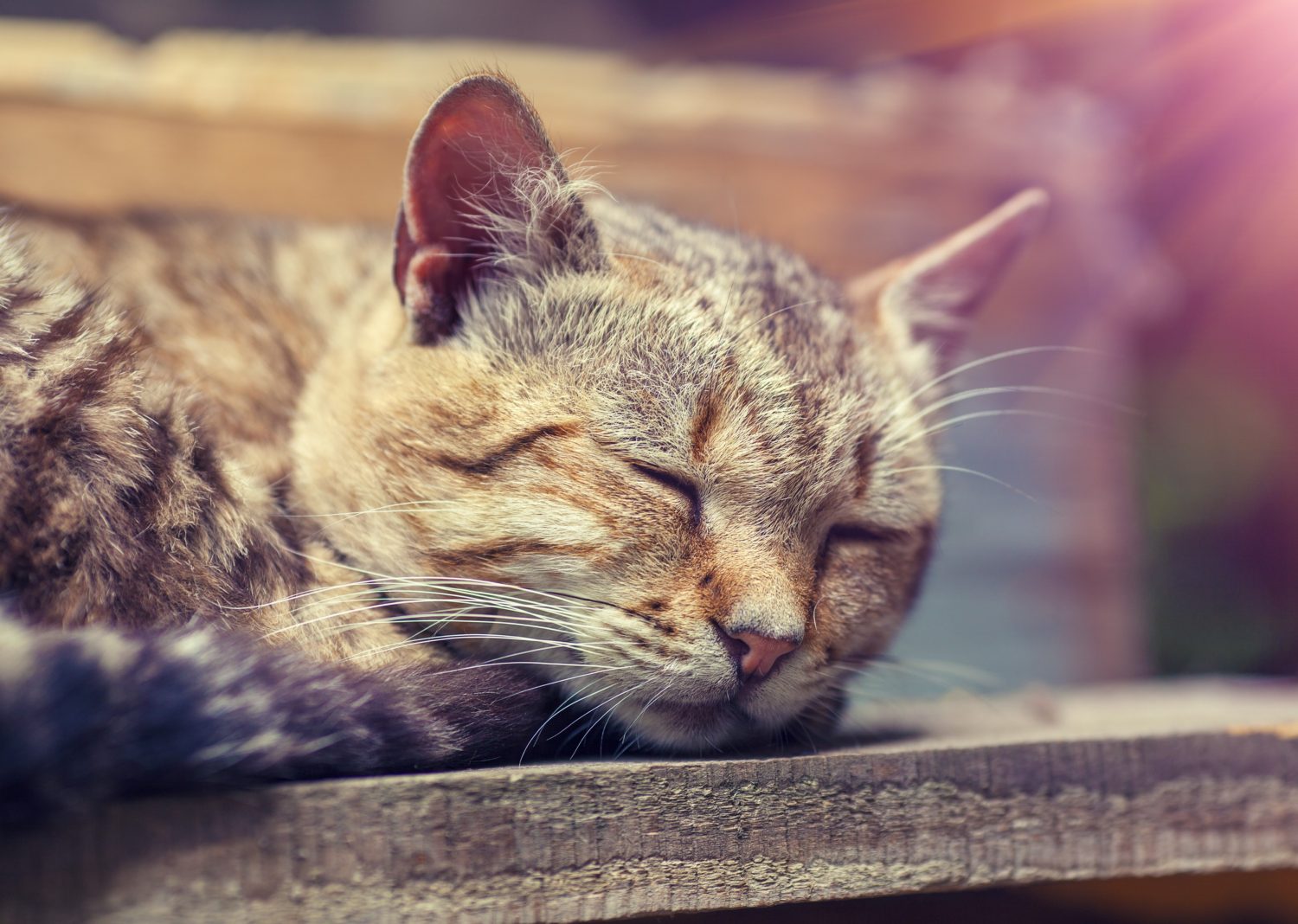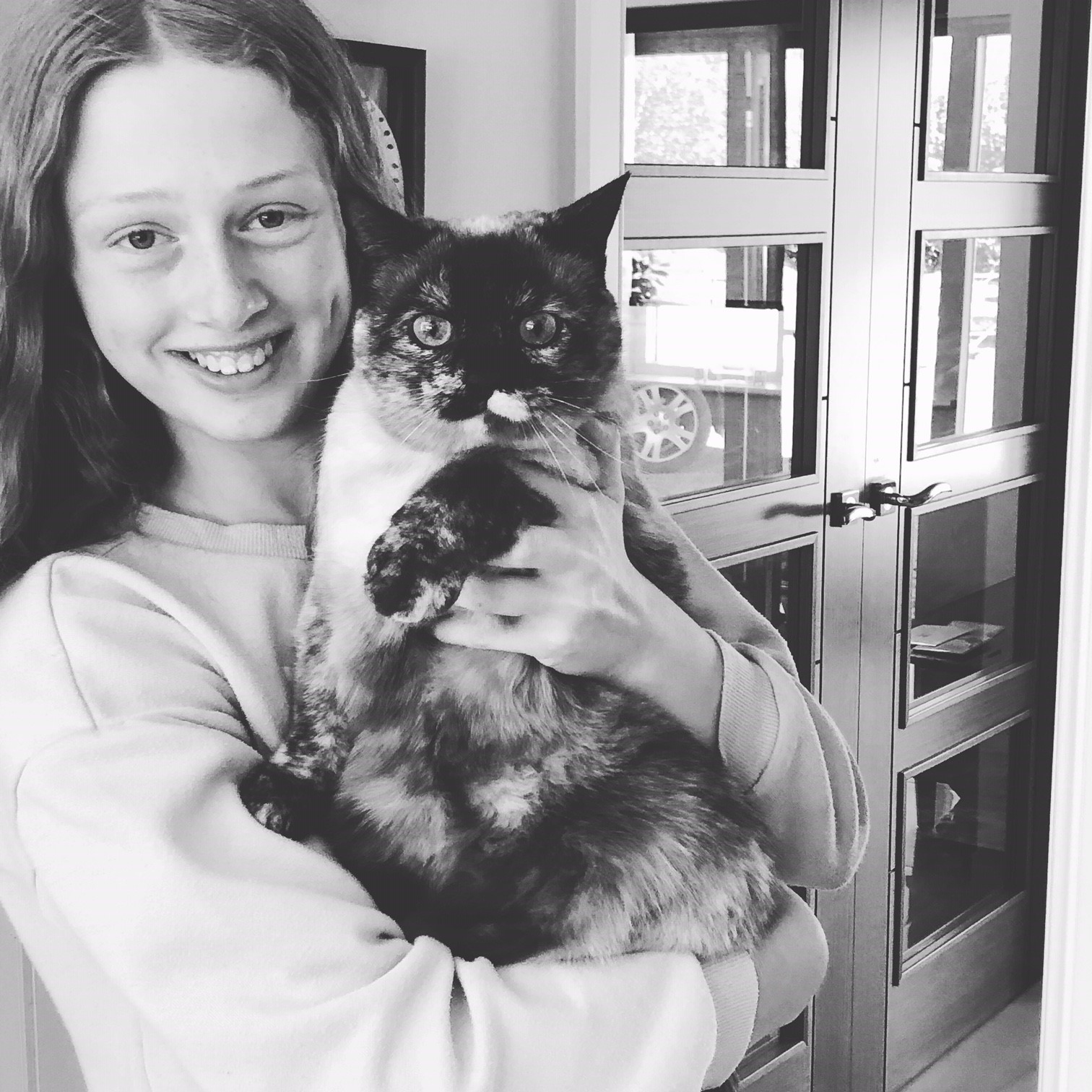
Are ponds safe for cats? Can cats drink pond water?
With our children approaching their teenage years, it felt the right time to realize a dream of mine – to have a wildlife pond in the garden. We were very aware of the dangers of a pond with young children, but now we had two additional little ones to think of – our two cats! Was having a pond a good idea? Are ponds safe for cats? Whilst this wasn’t an issue for our indoor cat, we wanted to make sure that it was safe for Misty, our outdoor cat.
Are ponds safe for cats?
Most cats do not like water but there are of course a few kitties who defy the ‘norm’. Therefore, water averse cats will tend to stay away from a pond or will only venture to the edges. The same may not be true for a young, inquisitive kitten. Like a young child, they very often have no sense of danger and exploring new sensations and experiences is just part of learning life skills. This is when a pond can be dangerous and could result in a young kitten drowning.
Some cat breeds really enjoy the water and will actually enjoy getting wet, with some even having a swim! Breeds that tend to enjoy water include Turkish Van, Turkish Angora, Bengal, Japanese and American Bobtail, American Shorthair, Maine Coon, Manx and the Norwegian Forest Cat.
Whether your cat likes or dislikes water, there are several things that can be done to minimize the dangers of ponds to cats. These considerations are also very useful for wildlife that may use or live near the pond such as hedgehogs, young frogs, rabbits and other small mammals etc. It is easier to incorporate these adaptations when a pond is being constructed from new but exiting ponds can be adapted too.

Considerations when constructing a new pond
The key factor when constructing a pond is that your cat, or any other animal, could get out of the pond, quickly and easily, if they fall in. Ensuring that there is an easily accessible escape route somewhere on the side of the pond can literally save an animal’s life. There are several ways this can be achieved including:
- putting sloped side somewhere in the pond
- providing large stones as stepping stones to the edge
- placing a log or a large plank of wood from the pond to the edge
- plants and shrubs in the water will also help.
These items can then be used by the animal to cling on to and crawl back to the safety.
Cats are not keen on wobbly surfaces and loose rocks around the edge can discourage your cat venturing any further. Care needs to be taken that these loose rocks become so loose that they themselves cause harm.
Raised pond are popular options with some pet owners. The walls will prevent any small animals climbing in to investigate the pond. Narrow external supporting walls will ensure that cats can’t jump up and prowl the perimeter.
Considerations for pre-existing ponds
If your home has an existing pond, then there are still things that can be done to increase safety. As with newly constructed ponds above, having an escape route is key. If the sides of the ponds cannot be changed then adding stepping stones and large logs can be just as useful and effective.
The other easy safety solution, whether on existing or newly constructed ponds, is to place a net or mesh on the pond. Not only can this prevent a cat or animal falling in, it has the benefit of preventing any fish stocked in the pond from predators.
Other pond considerations
Apart from falling in, there are a few other safety factors to consider:
Electrical cabling – any cabling used for lighting or pond pumps need to be stored safely and adequately cased away from any sharp claws and teeth. Ensure any equipment used is suitable for pond and outdoor use. Do not hesitate to seek further advice or professional help if required.
Chemicals – This will not be a factor for wildlife ponds. However, ponds stocking fish may require chemical treatment at times. Fish diseases and illnesses may be treated with adding chemicals to the pond. The undiluted treatments will most certainly be toxic to cats and their storage will require the upmost care. If your cat is prone to drinking pond water or is one of the breeds that enjoys a splash, then it is essential to check if the diluted chemicals, once added to the pond, are a danger. ALWAYS READ THE LABELS AND SEEK PROFESSIONAL ADVICE IF UNSURE.
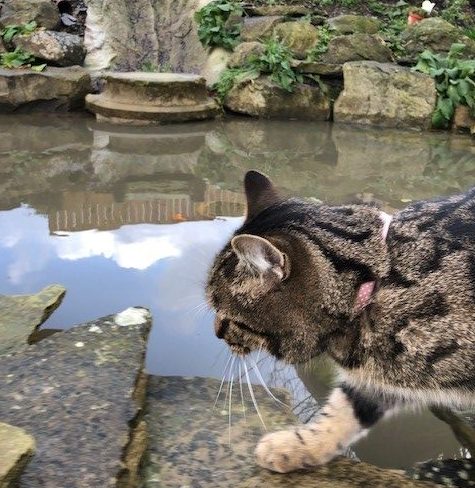
Can cats drink pond water?
Water is essential to a cat’s health, but they don’t naturally drink a lot of water. A cat can go for quite a while with no fluid. This traces back to their early hunting days where they would get most of their water from their prey such as mice and other rodents. Cats can also be quite fussy about their water. Factors such as water freshness, water temperature, taste and types of bowl can be factors which influence their drinking habits. Check out our article ‘How much water does a cat need’ for an in-depth article on the importance of drinking water for cats. But despite a selection of fresh daily water options, one of our cats – Misty, prefers to drink from a puddle. Would the water in the pond be a safe option?
Ideally, cats shouldn’t drink pond water as, very often, the water is still and stagnant. This may include any number of objects and various bacteria. But this could also be the case with any outside puddles or water in any outside container. And most cat owners will agree, if your cat wants to do something then she most certainly will try her best to do so. Preventing an outside cat from drinking from random water sources is virtually impossible! Drinking pond water may cause your cat to have an upset stomach which may result in sickness or diarrhea. But they may also be perfectly fine.
It is a good idea to offer fresh, clean water sources to outside cats too. Having this clean option may discourage them from drinking from unknown water sources. If your cat does have a stomach upset and you have concerns, please contact your veterinary for advice.
How to protect your pond fish from cats
If your pond is also home to fish then the fish may need protection as well as your cat. Given that most cats do not like getting wet, and that domestic cats will be well fed, it is unlikely that thy will see the fish in the pond as their next meal. They may very well be inquisitive and try to swipe with their paws but for the majority of cats their play will stop there. Your fish is far more likely to be in danger from other predators such as herons, minks or raccoons. Of course, as with anything kitty related, there are always exceptions and as we’ve explored earlier there are breeds that do in fact enjoy the water. Therefore, to ensure that your fish are protected, there are a few options to consider:
Netting – Strong durable netting over the pond is a relatively easy and cost-effective method of keeping your fish safe from your cat. Some pond owners use chicken wire as a form of netting.
Fish tunnel / Fish shelter – A fish tunnel provides a safe place for the fish to hide and shelter until the danger has passed.
Water sprinkler – Some water sprinklers can be set to be activated by movement so when the cat approaches the pond it will set off the sprinkler.
Plants to deter cats – Some plants emit odors that cats find unpleasant. By planting these around the pond it may deter any cats from approaching the pond area. Such plants include the scaredy-cat plant (Coleus canina), lavender, rosemary, rue and pennyroyal.
For more information about fish keeping please refer to https://fishkeepingforever.com/
Safe pond plants for cats
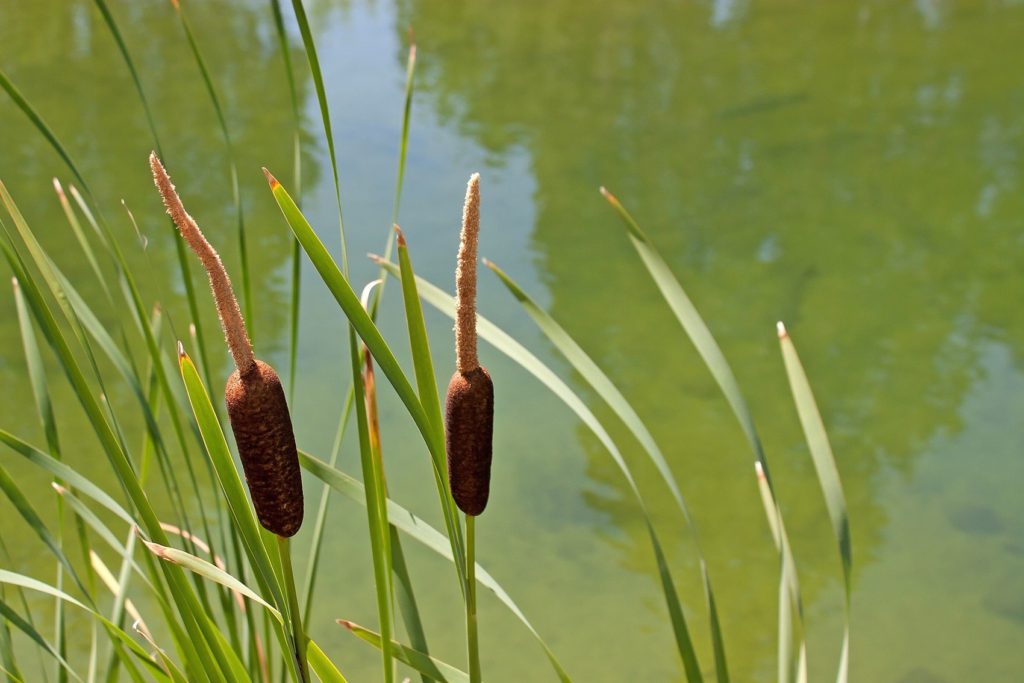
It is always best practice to be better safe than sorry, and whether or not your cat is supposed to be near the pond, it would be very wise to avoid planting pond plants that are toxic to cats. Some popular pond plants that are toxic to plants are:
Elephant ears (Colocasia esculenta) – this plant is toxic to both cats and dogs. It causes burning to the mouth. If ingested it can cause drooling, vomiting and difficulty in swallowing.
Water Hemlock (Cicuta maculate) – this perennial can cause seizures, stomach pain, fever and can be fatal.
Water Hyacinth (Eichhornia Crassipes) – this floating water plant is poisonous to cats, dogs and horses. This plant isn’t usually found in a cold environment.
This list is by no means exhaustive and thorough research should be made regarding all plants and shrubs in your garden whether in the pond or in a flower bed. You may enjoy our guide to creating the perfect cat friendly garden, a great article on building a garden haven that suits you and your cat. Find it here at ‘Creating the ultimate cat friendly garden – 10 top tips’.
It is certainly possible to have a pond and a cat. By applying some thought to safety and including some cat adaptations to the pond then your cat, the wildlife pond and any fish can live in harmony.
Other articles you may find of interest:
Creating the ultimate cat friendly garden – 10 top tips
Should I let my cat outside at night? Indoor or outdoor cat?
Has my cat been poisoned? Symptoms-Causes-Treatment
Why do cats climb trees? How can I stop my cat climbing trees?
